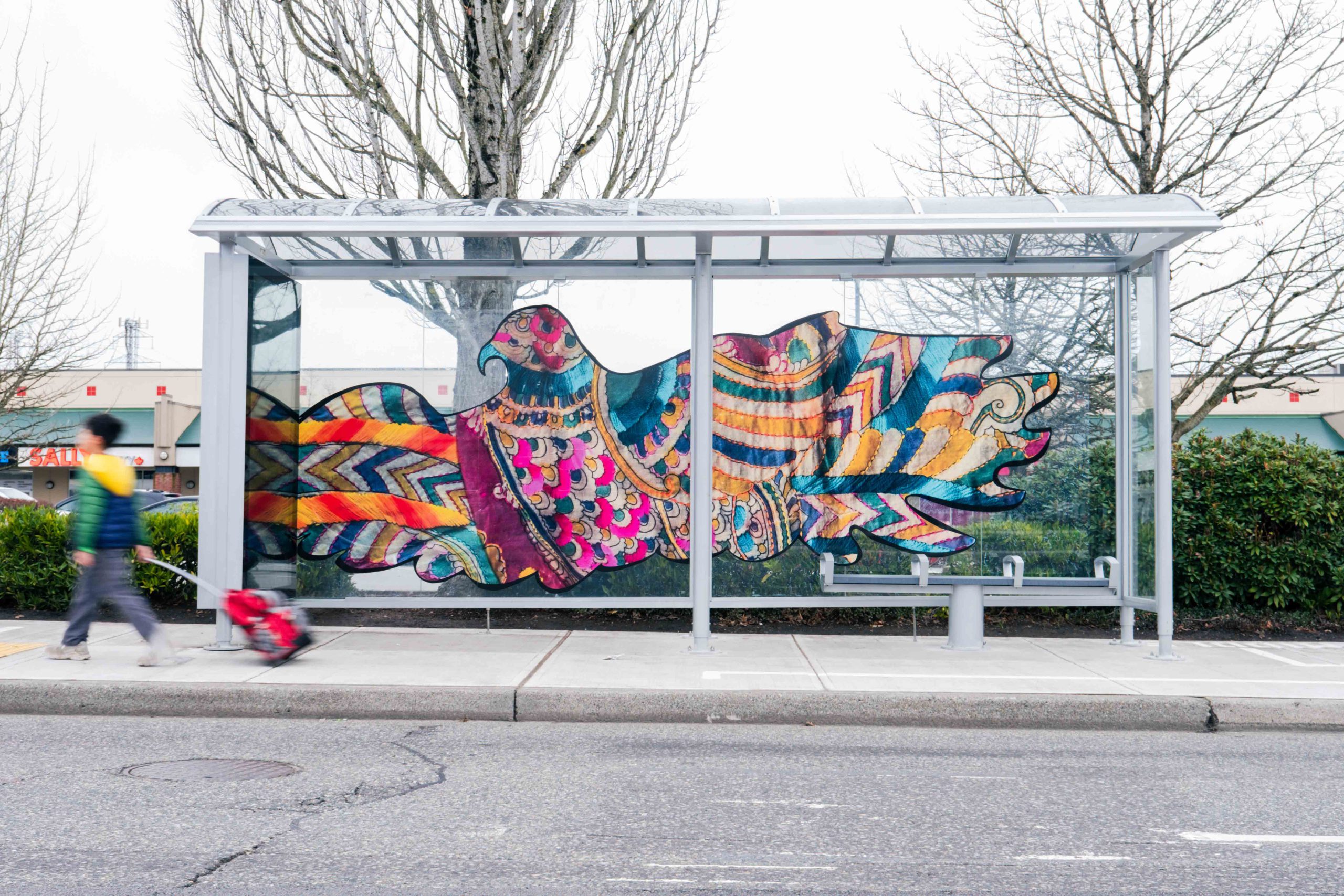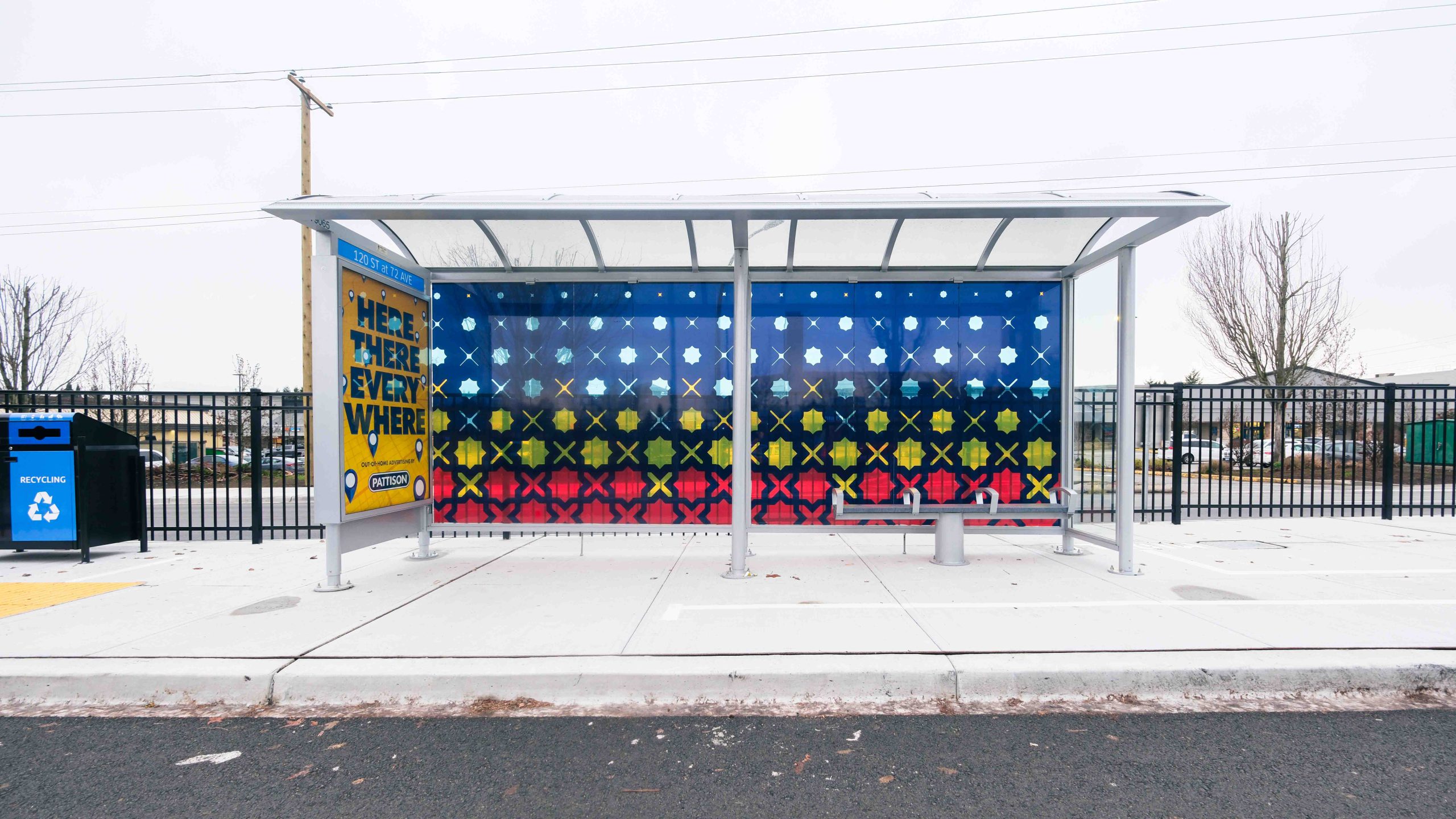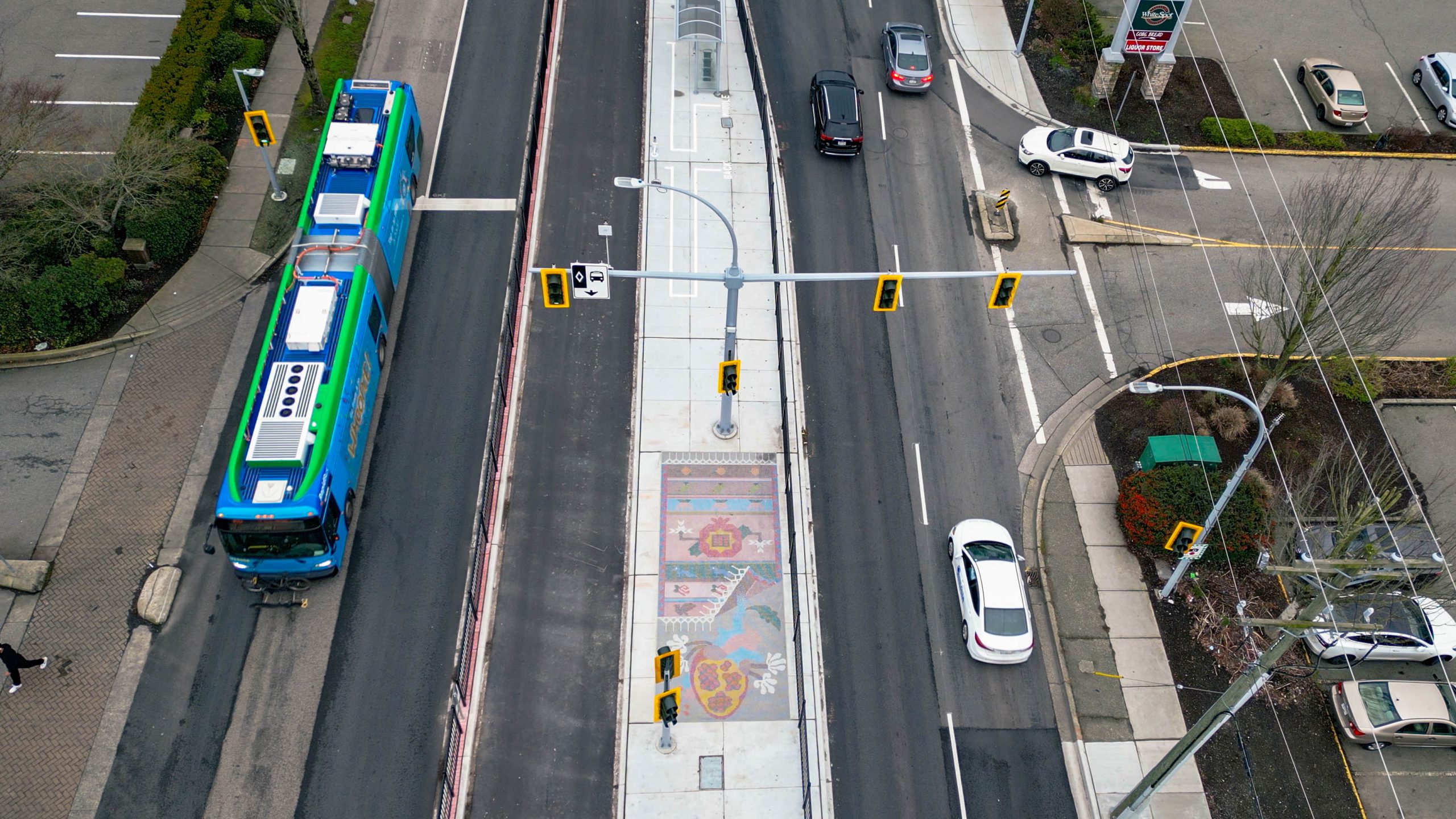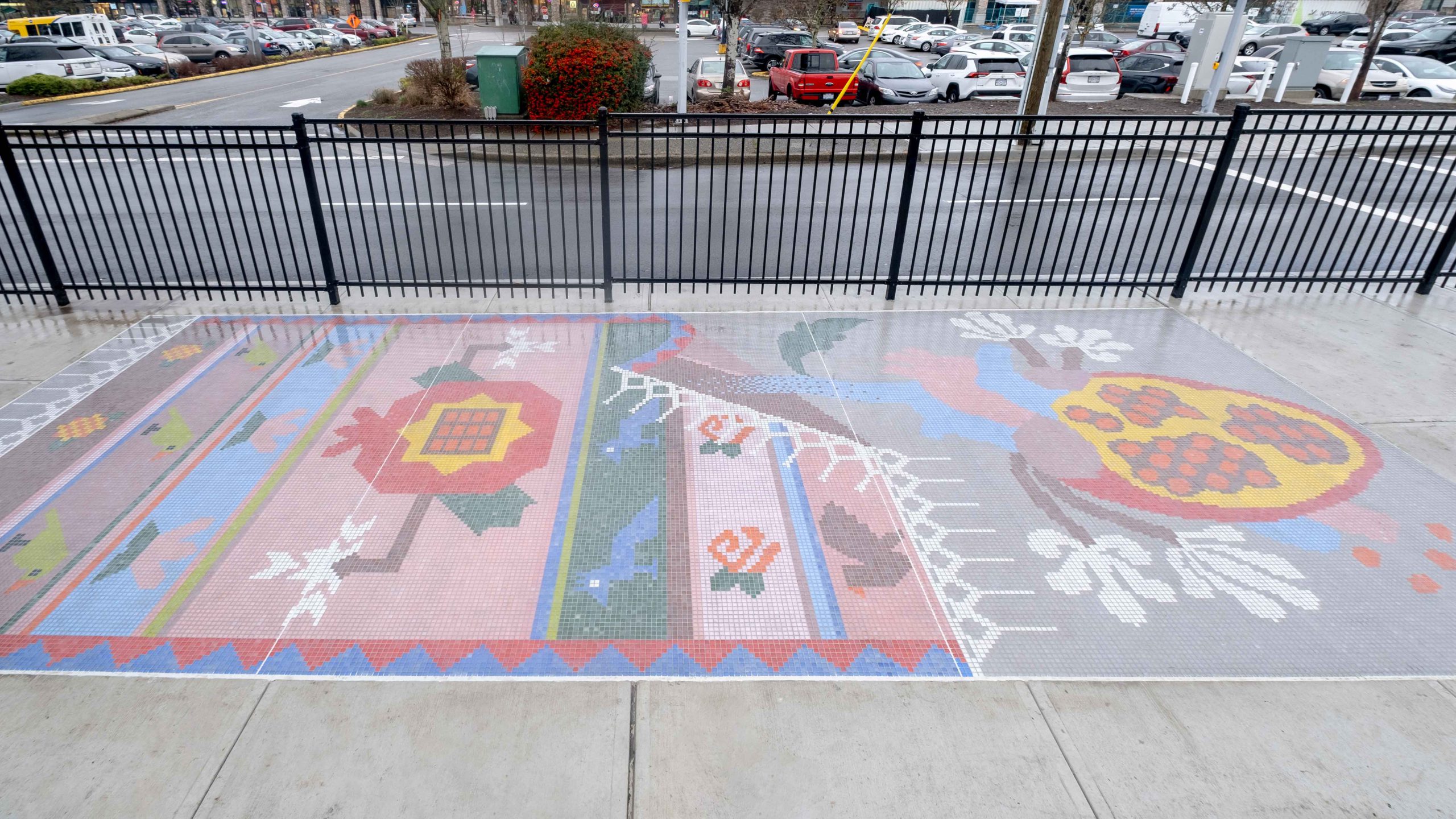Public art along the R6 RapidBus route, explained
Public art along the R6 RapidBus route, explained
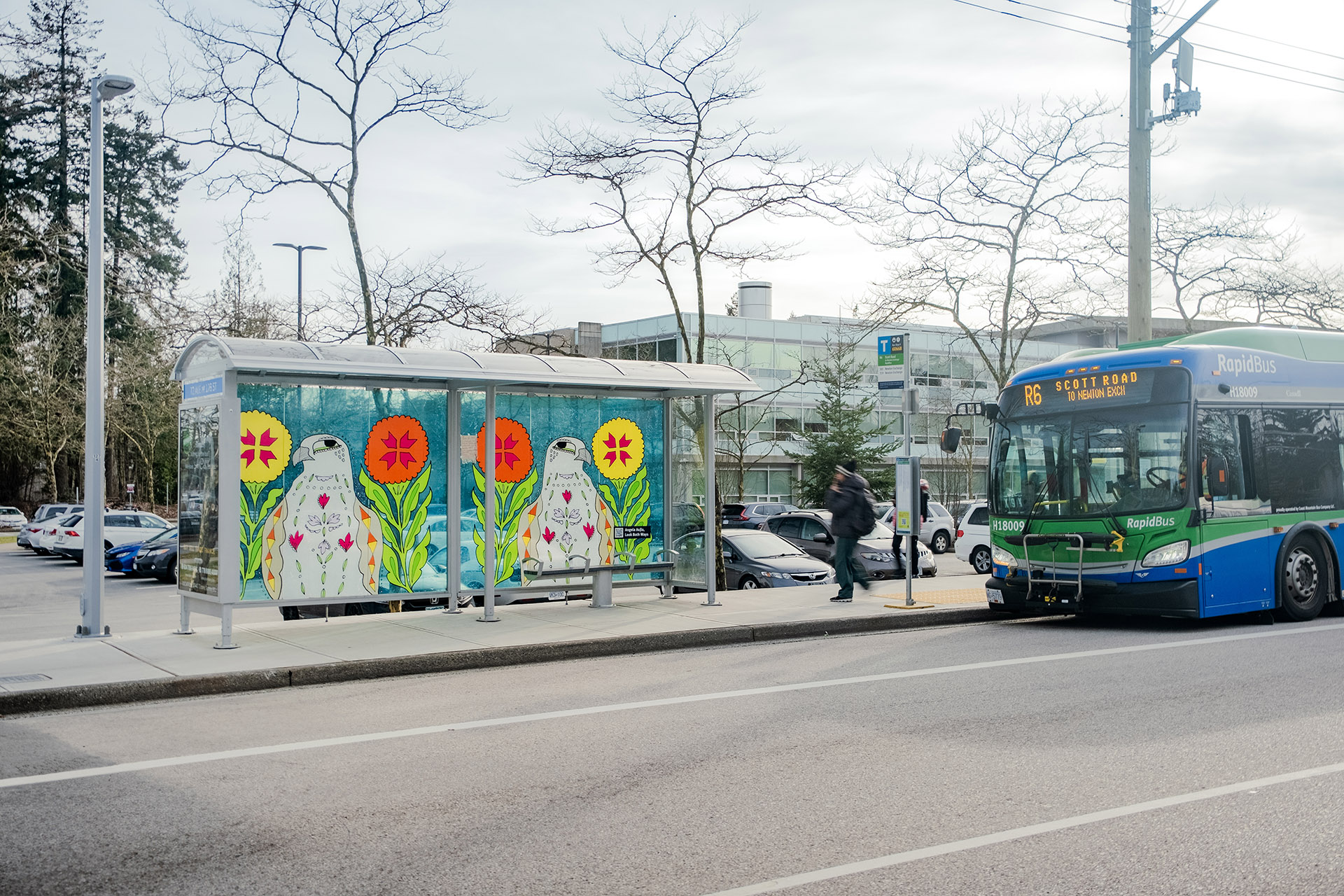
The R6 Scott Road RapidBus provides faster bus service for Surrey and Delta residents with features like a median centre-island bus boarding area, bus priority lanes, and sheltered bus stops.
The route also features public artworks designed by three artists who have connections to Surrey and Delta’s South Asian communities. You’ll find them at some bus shelters along the route and the median centre island at Scott Road and 72nd Ave. If you’ve seen these artworks and are curious about what they mean, here’s the story behind them.
Phulkari and Baaj-inspired bus shelter glazings by Angela Aujla
Angela Aujla is a visual artist and professor who designed two bus shelter glazings —”Sarbat-da-Bhala/May Good Come to All”, is on view at the northbound stop at 72 Avenue and Scott Road, and “Look Both Ways” is on view at the eastbound stop at Kwantlen Polytechnic University (KPU).
Both of her designs take inspiration from Sikh iconography, specifically designs of the Northern Goshawk bird, or Baaj in Panjabi. The bird of prey is a recurring symbol in Sikh scriptures. It also happens to have a habitat here in the lower mainland!
“Sarbat-da-Bhala/May Good Come to All” is inspired by phulkari textiles, which are traditional embroidery patterns from the Punjab region. The glazings display beautifully drawn birds with vibrant, eye-catching colours.
Jaali-patterned bus shelter glazing by Jessie Sohpaul
Jessie Sohpaul designed the bus shelter glazing for two bus stops — at the southbound median bus stop at 72 Avenue and Scott Road and the westbound KPU bus stop.
His piece is inspired by Jaali, or lattice patterns commonly featured in Indian architecture. The Jaali influence is apparent—the glazing bears a repeating geometric pattern that looks like lattice. The design celebrates the journey of those who have migrated and provides a connection for the riders who see it.
Dari-inspired mosaic by Keerat Kaur
Keerat Kaur is the artist behind “Dari 120”, the mosaic on the median bus stop at 72 Avenue and Scott Road.
The mosaic is intricate and colourful; if you take a close look, it reveals tons of tiny, meticulously arranged tiles. Her design for the piece was inspired by Panjabi floor Dari–woven floor carpets that bear similar complex designs. The central motifs featured in the piece are birds and flowers, each conveying a symbolic meaning, which includes playfulness, celebration, strength, elegance, perseverance, and reality.
Not only is it gorgeous to look at, but the piece is also packed with cultural significance. The mosaic lies along the median much like a woven Dari!
All four pieces are unique on their own, but they manage to provide the areas they exist in with a sense of cultural cohesion. The representation and symbolic meaning that each piece holds celebrate the South Asian community and culture beautifully. If you find yourself taking the R6 RapidBus, keep an eye out for these stunning public art pieces!
Our transit system is rich in public art installations. Use this map to find more art installations along your transit journey.
Sophie Tomei


